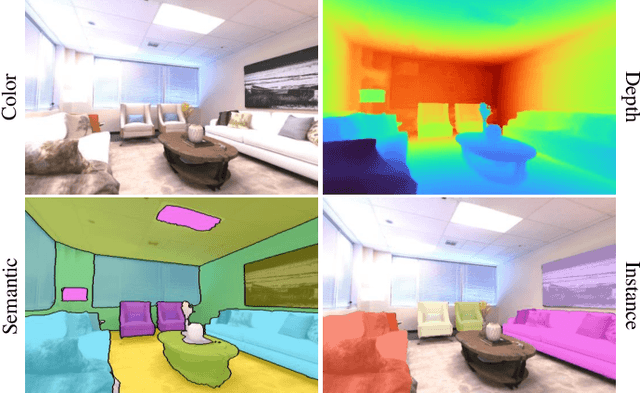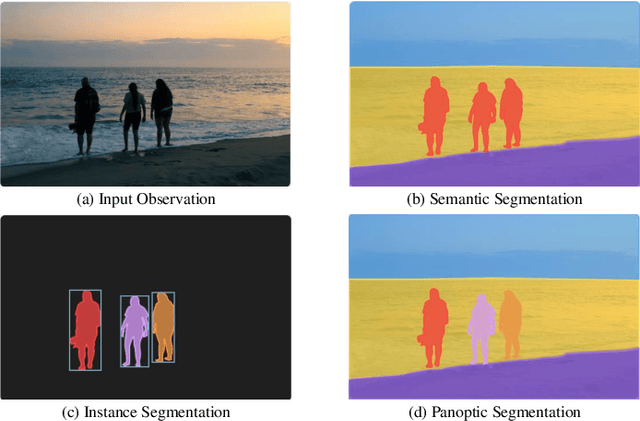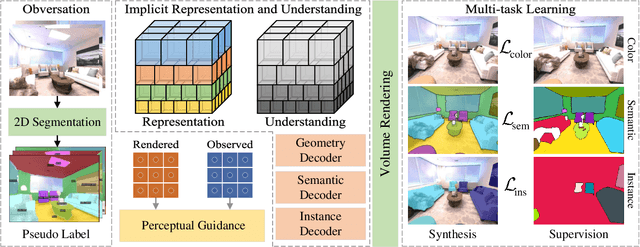In-Place Panoptic Radiance Field Segmentation with Perceptual Prior for 3D Scene Understanding
Paper and Code
Oct 06, 2024



Accurate 3D scene representation and panoptic understanding are essential for applications such as virtual reality, robotics, and autonomous driving. However, challenges persist with existing methods, including precise 2D-to-3D mapping, handling complex scene characteristics like boundary ambiguity and varying scales, and mitigating noise in panoptic pseudo-labels. This paper introduces a novel perceptual-prior-guided 3D scene representation and panoptic understanding method, which reformulates panoptic understanding within neural radiance fields as a linear assignment problem involving 2D semantics and instance recognition. Perceptual information from pre-trained 2D panoptic segmentation models is incorporated as prior guidance, thereby synchronizing the learning processes of appearance, geometry, and panoptic understanding within neural radiance fields. An implicit scene representation and understanding model is developed to enhance generalization across indoor and outdoor scenes by extending the scale-encoded cascaded grids within a reparameterized domain distillation framework. This model effectively manages complex scene attributes and generates 3D-consistent scene representations and panoptic understanding outcomes for various scenes. Experiments and ablation studies under challenging conditions, including synthetic and real-world scenes, demonstrate the proposed method's effectiveness in enhancing 3D scene representation and panoptic segmentation accuracy.
 Add to Chrome
Add to Chrome Add to Firefox
Add to Firefox Add to Edge
Add to Edge